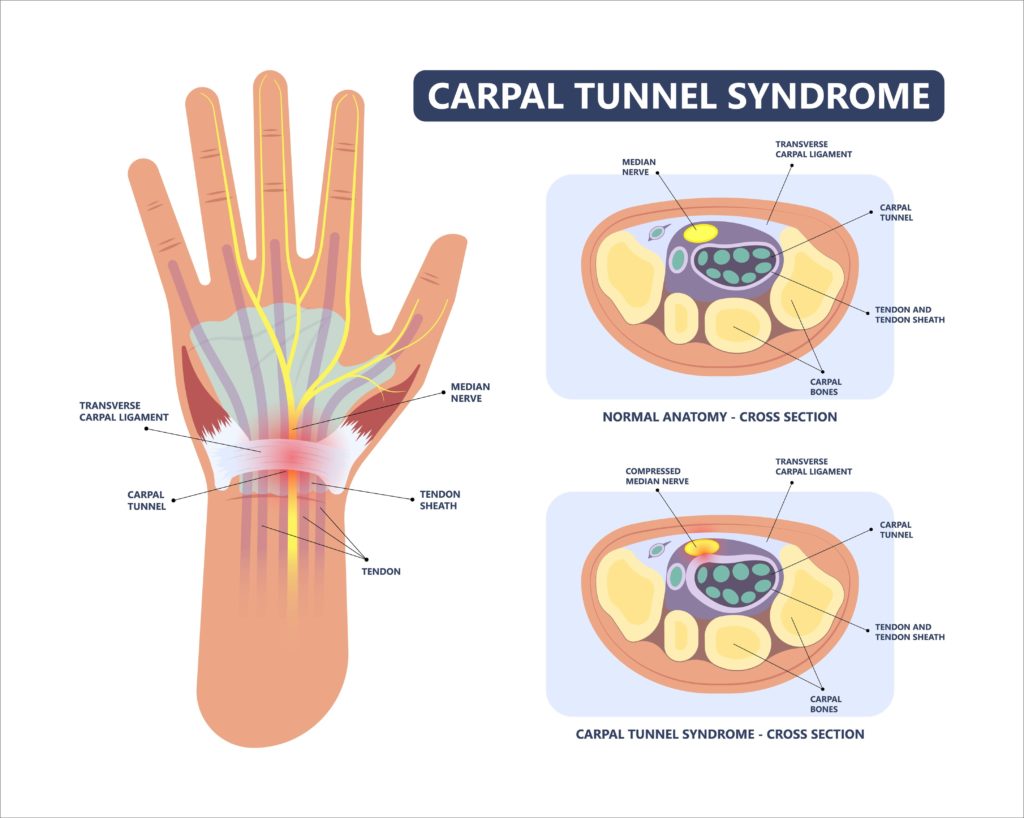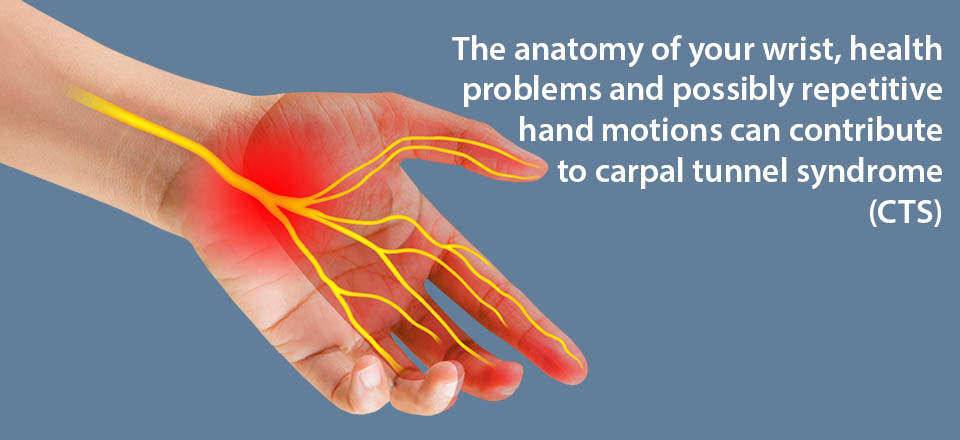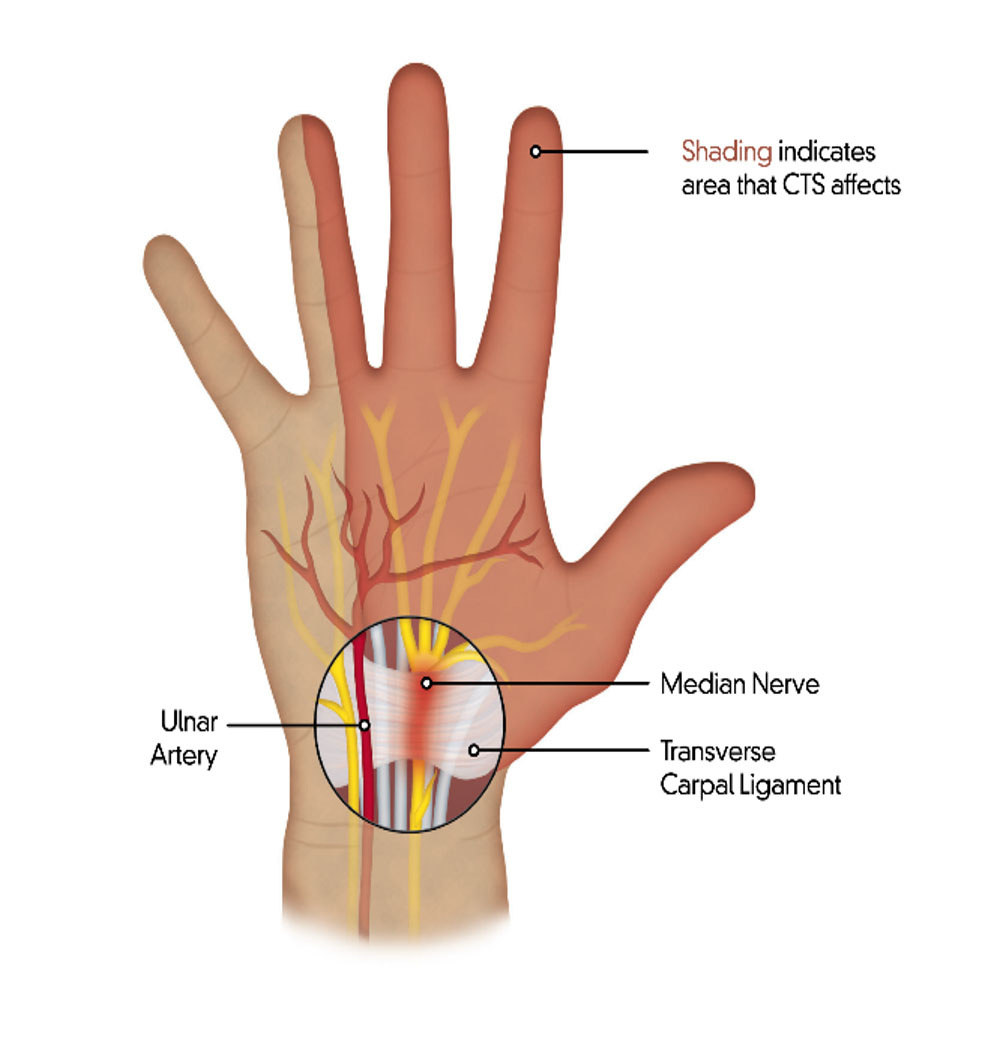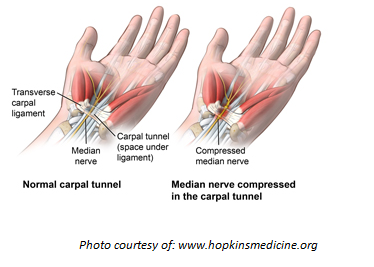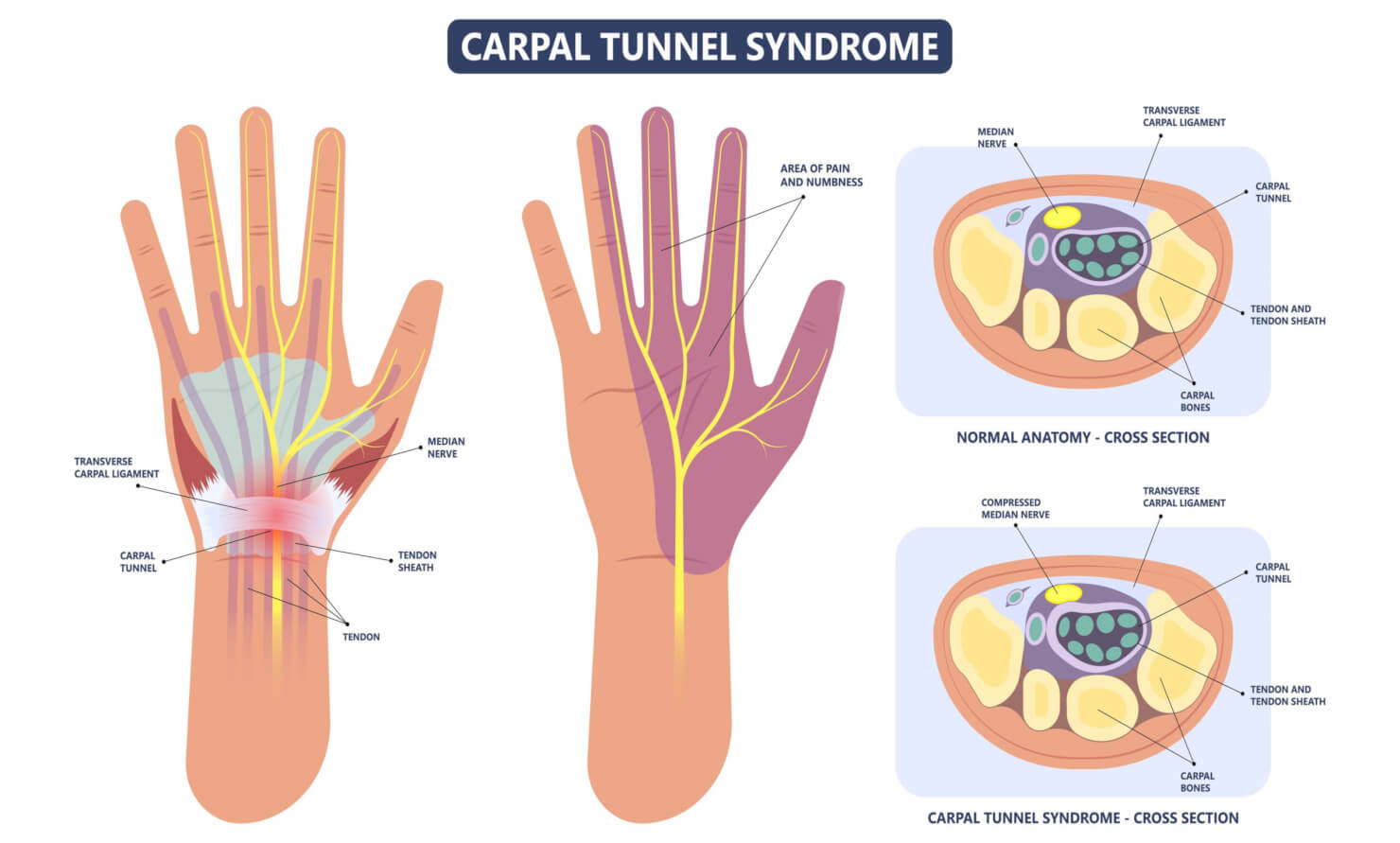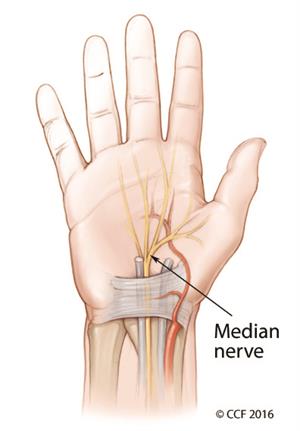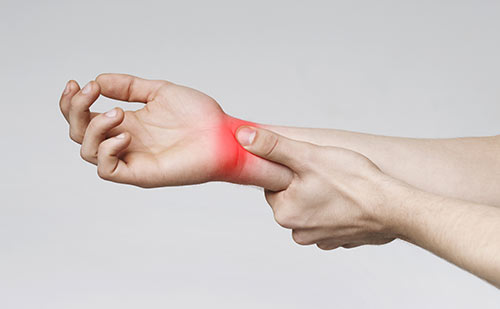Carpal tunnel syndrome is a common condition that occurs when the median nerve, which runs from the forearm into the hand, becomes compressed or squeezed as it passes through the carpal tunnel. The carpal tunnel is a narrow passageway located on the palm side of the wrist and is made up of bones and ligaments.
The median nerve is responsible for providing sensation to the thumb, index finger, middle finger, and part of the ring finger. It also helps control the muscles at the base of the thumb. When the median nerve becomes compressed, it can cause numbness, tingling, and weakness in the hand and fingers. It can also lead to pain and discomfort in the wrist and hand, as well as difficulty with fine motor tasks such as buttoning a shirt or holding a pen.
There are several factors that can contribute to the development of carpal tunnel syndrome, including repetitive hand and wrist movements, arthritis, pregnancy, and obesity. It is also more common in people with diabetes or thyroid problems.
The treatment for carpal tunnel syndrome typically involves a combination of approaches, such as wearing a wrist splint to keep the wrist in a neutral position, taking nonsteroidal anti-inflammatory drugs (NSAIDs) to reduce inflammation and pain, and undergoing physical therapy to stretch and strengthen the muscles in the hand and wrist. In more severe cases, surgery may be necessary to release the pressure on the median nerve.
Preventing carpal tunnel syndrome involves taking breaks from repetitive hand and wrist activities, maintaining good posture and ergonomics, and keeping the wrists in a neutral position while typing or using a mouse. Wearing wrist splints or other supportive devices can also help reduce the risk of developing the condition.
In conclusion, carpal tunnel syndrome is a condition that occurs when the median nerve becomes compressed as it passes through the carpal tunnel in the wrist. It can cause numbness, tingling, and weakness in the hand and fingers, as well as pain and discomfort in the wrist and hand. Treatment involves a combination of approaches, including splinting, medication, and physical therapy, and in severe cases, surgery may be necessary. Preventing the condition involves taking breaks from repetitive hand and wrist activities, maintaining good posture and ergonomics, and wearing wrist splints or other supportive devices.
